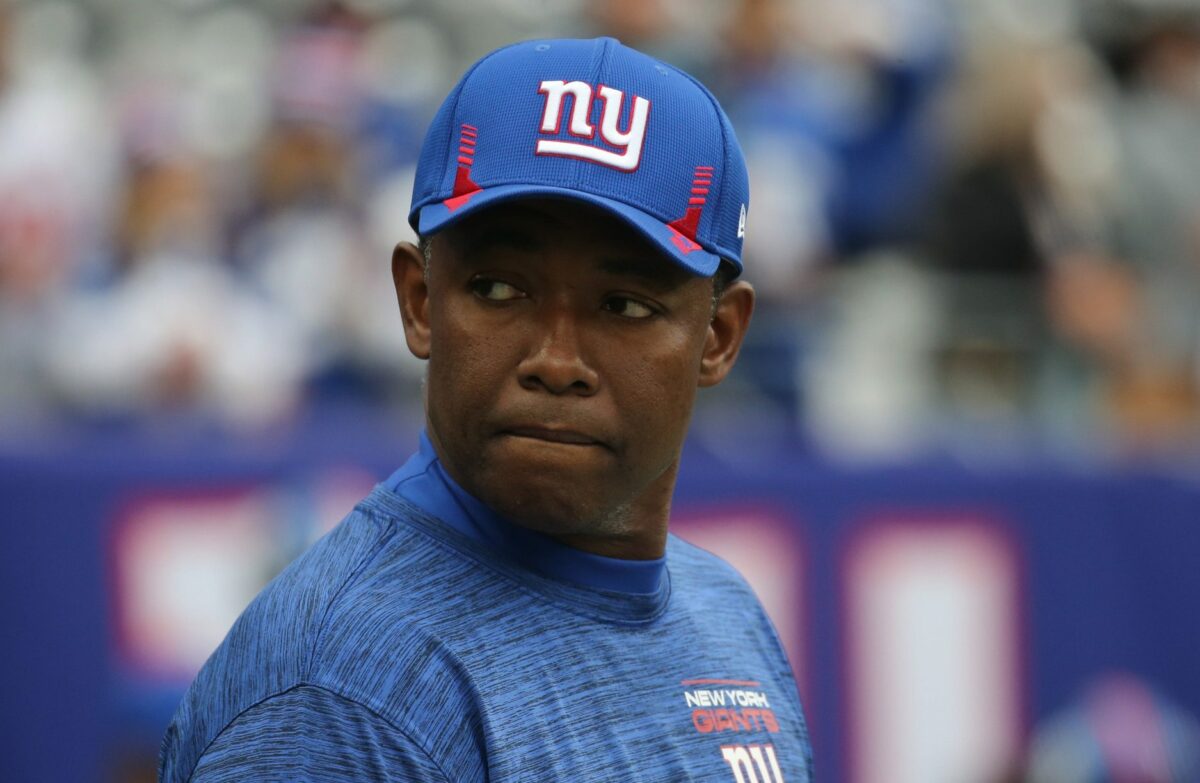The day Josh McDaniels took over as head coach, he had yet to officially name a defensive coordinator. Still, he was asked whether the Raiders would be going with a 4-3 or a 3-4. To which, he said those base defenses don’t really exist anymore in today’s NFL.
At the scouting combine, Josh McDaniels took to the podium for his second press conference, at which point he had hired Patrick Graham as his defensive coordinator. And, of course, he was asked if the Raiders were thinking 4-3 or 3-4 defense. His answer was the same.
Friday Patrick Graham took to the podium for his first press conference since being officially announced as Raiders defensive coordinator. Any guesses as to the first question he got? Yep, he was asked the ol’ 4-3 vs 3-4 question. His answer was not surprising.
“The game is sub-defense. Period, point blank,” said Graham, referring to the lack of a defined 4-3 or 3-4 base defense. “Whether it’s 11-personnel that we’re seeing from teams or the 12-personnel that plays like 11-personnel and the way we combat that a lot of time is playing sub-defense. So, when I say sub-defense, now you’re getting into the 4-2-5 world of it. Whatever the spacing is – four-down, five-down, three-down – however the spacing is, you’re really dealing in a world of five DB’s on the field at once. And four bigger bodies with two linebackers.
“So, to me the 4-3/3-4 discussions is almost like it’s antiquated, to be honest with you. What you’re talking about sub-defense do you have guys that can rush the passer? Yes. Do you have guys that can stop the run? Yes. Do you have guys that can cover, that have shown they can cover in the past? Yes. So, those are the three major things I’m looking for aside from tackling, so, yeah, I’m good with that.”
For those unfamiliar, 11-personnel mean one running back and one tight end. 12-personnel means one running back and two tight ends.
In either instance, the offense is essentially lining up with three and even four receivers. Whether that be two wide receivers and two tight ends or three wide receivers and a receiving tight end.
Those instances being so common forces defenses to line up in a 4-2-5 which mean four defensive linemen, two linebackers, and five defensive backs — usually two outside cornerbacks, two safeties, and a nickel corner.
Hopefully, that answer will finally dispense with the question of whether the Raiders run a 4-3 or 3-4 once and for all.
As to the three things Graham said he needs in order to make that defense work, he’s a couple of pieces shy at the moment. In particular, he’s one DB shy (cornerback) and at least two big interior run stoppers. The pass rushers is the one thing he has.
Aside from that, Graham discussed his philosophy, which, if I might pull from Raiders’ recent past, basically suggests it will have the appearance of something Paul Guenther might draw up, but actually something closer to what Gus Bradley would draw up.
“We’re all teachers. What we do is develop lesson plans and try and implement what we want to see out there on the field,” said Graham, noting that he isn’t going to be doing anything especially unique. “The complexity… it’s probably more of an *illusion* of complexity because honestly . . . if you think we’re about to do that many coverages and be good at it, that’s going to be real hard. So, it’s the illusion of being complex. What we try to do with our lesson plans is teach the guys conceptual football, teach them situational football, all the stuff Josh [McDaniels] talked about being a smart, tough football, just making sure we getting that stuff down and from there it grows. It evolves more over time than creation. So, we’re trying to evolve the defense as opposed to trying to create new things every week. That’s a big part of what we do and it starts with the conceptual learning early on.”
When you hear players talk about defenses they like the best, they talk about simplicity allowing them to play fast. Guenther’s defense was complex and confusing, causing players to second guess themselves and take too long to think about where they needed to be instead of react quickly.
Complexity is important in the NFL if only because so many of the good quarterbacks are given the autonomy to step up to the line, read the defense, and call audibles based on what they see.
If a team can create confusion through disguises, while behind that is something easy to process for the players, you get the best of both worlds.
[listicle id=91687]
